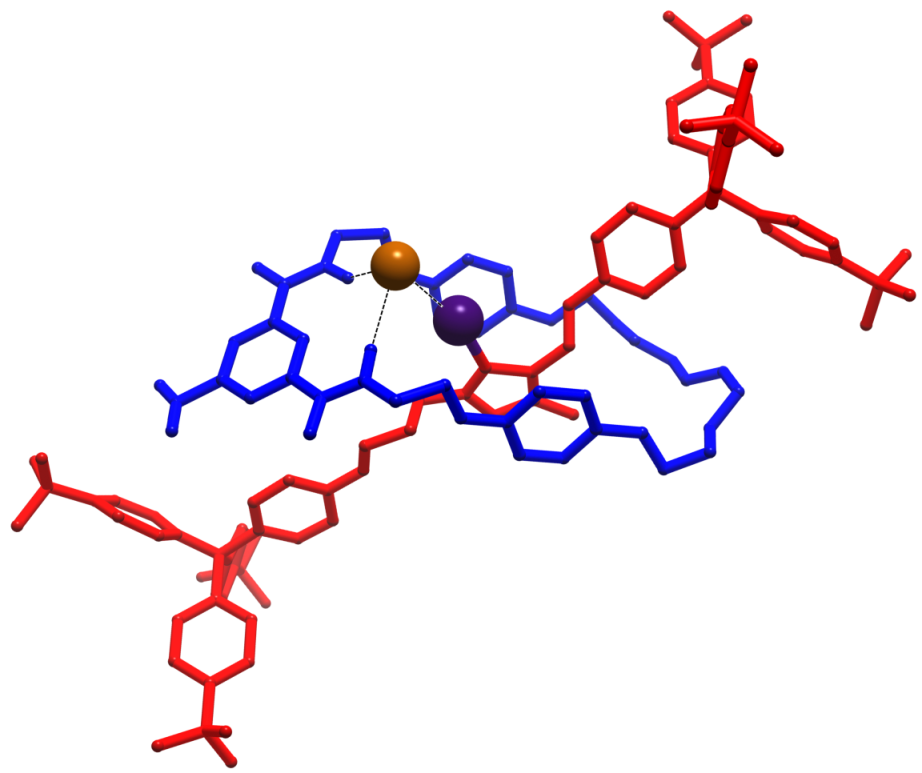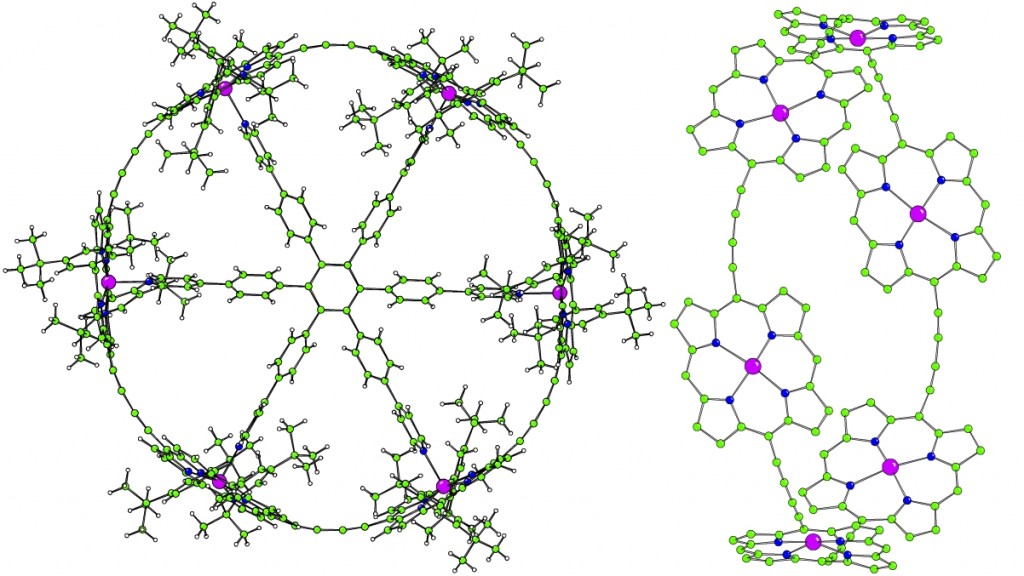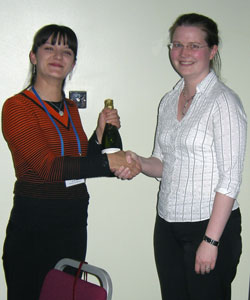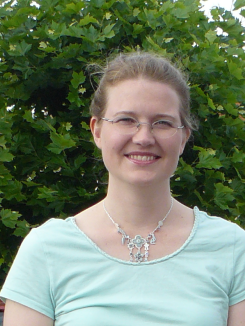Presented by:Â Dr. Nathan L. Kilah, Matthew D. Wise, Christopher J. Serpell, Nicholas G. White, Dr. Kirsten E. Christensen & Dr. Amber L. Thompson
Research Leader:Â Prof. Paul D. Beer
Published:Â Journal of the American Chemical Society
This structure represents the first use of solution phase halogen bonding to control and facilitate the anion templated assembly of an interlocked structure. It unambiguously confirms the interlocked nature of the system, and the vital role played by halogen bonded anion templation in its assembly. The crystals were small and diffracted poorly, so data were collected on I19 at Diamond. Unfortunately, they also suffered severe radiation damage, so data were collected using a single φ scan leading to a paucity of data.  Extensive disorder meant that the final refinement had a data:parameter ratio of 3.6:1 and required 4401 restraints.



